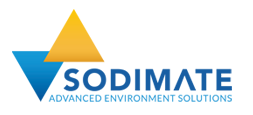When it comes to water softening, there are several options available. Each option has benefits and drawbacks, let’s look at them in detail below.
What is Water Softening?
Water softening is the process of removing minerals from water that make it “hard” and generally unsuitable for household applications. These minerals include calcium and magnesium, they can lead to scale build-up in plumbing and household appliances.
Advantages of Water Softeners
As mentioned, water softeners help remove the minerals that cause water to be “hard”. They make the water palatable both physically and with appliances.
Some other benefits of water softeners are:
Improves Water Quality
They improve the quality of water by making it easier to use. Soft water is generally better to use for cleaning and cooking around the house to running through the plumbing in different industries.
Reduces Chemical Consumption
Water softeners reduce chemical consumption as it’s not necessary to add extra chemicals to the water in a bid to make it more palatable or more economical and generally sustainable.
Improves Equipment Life
They help improve equipment life by leaving less build-up on it and causing less wear and tear. They are, therefore, an affordable way to keep a range of appliances working well for the extent of their lifespan.
Reduces Energy Consumption
Water softeners reduce energy consumption by calling for less energy to be applied to running equipment that uses water. This is because soft water requires less energy to heat and work within general terms.
Differences between Sodium Chloride and Potassium Chloride
Sodium chloride and potassium chloride are two commonly used salts, but what sets them apart? While sodium chloride is a crystal with the formula NaCl, potassium chloride is an ionic solid with the formula KCl. The main difference between the two lies in their electronegativity, which is higher for potassium chloride. This affects their various uses in industries such as food processing and healthcare.
The two most popular water softeners on the market have several differences between them. Here are a few of them:
Cost Efficiency
Based on cost efficiency, sodium chloride would be the more cost-effective option because it’s easier and more affordable to attain. If cost is a major determinant when you are looking for a water softener, skip potassium chloride as it can cost up to three times more than sodium chloride.
Health Impact
When it comes to health impact, potassium chloride is the better option because it adds beneficial potassium to the body. It’s also better for use by people with hypertensive disorders as it does not add any potentially harmful salts to their diet.
Environmental Impact
Potassium chloride is still the better option when it comes to environmental impact, as it has a smaller effect on the environment. The biggest concern with the salts used to soften water is with their disposal, and since potassium is commonly used in fertilizers, it’s going to have a positive impact if anything on the environment when discharged.
Performance
In comparing the performance between the two, sodium chloride is better because less of it is needed to soften the same amount of water than potassium chloride. In this way, its cost-effectiveness becomes even more evident because a little goes a long way.
Softener Usage
When you consider the usage of sodium vs. potassium, there is room for each one in the market. This is because different people will have different needs and preferences, and this is what will make them pick one over the other if they are informed of the details.
Which One Should You Choose?
From the comparison, it’s clear that both options have benefits and demerits attached to them. A professional can help you decide which option will suit you best as well as the right equipment to use.
At Sodimate, we have a variety of soda ash feed systems that can be used in several applications. These can be adjusted to fit various setups and needs.
Soda ash can be used alongside other treatment systems to deliver cleaner and softer water, as the soda ash itself precipitates some of the hard minerals present in water. Speak to our experts today and we’ll help you find the best equipment and setup that’ll give you the clean, soft water that you need.
FAQs
While both sodium chloride (NaCl) and potassium chloride (KCl) are commonly used for water softening, they have different properties that make them better suited for certain situations. Sodium chloride is more effective at removing hardness minerals like calcium and magnesium, while potassium chloride is less efficient but can be a good alternative for people who want to reduce their sodium intake. However, it’s important to note that potassium chloride is more expensive than sodium chloride and may not be as widely available. Ultimately, the choice between the two depends on your specific needs and preferences
- Regulates fluid balance in the body
- Helps maintain proper muscle and nerve function
- Can lower blood pressure and reduce the risk of heart disease and stroke
- May reduce the risk of kidney stones and osteoporosis
- Can be used as a salt substitute to reduce sodium intake











